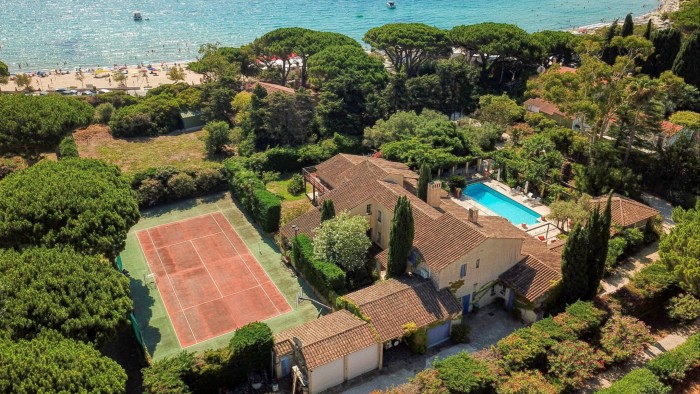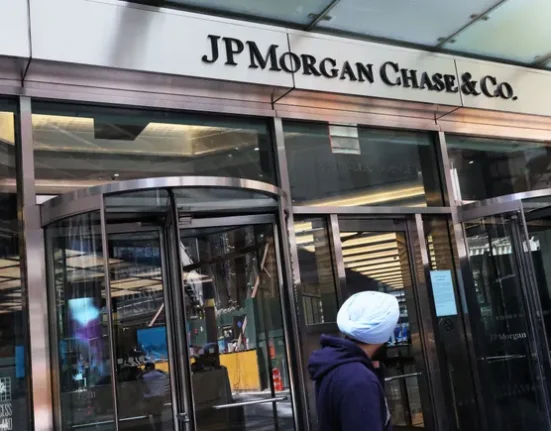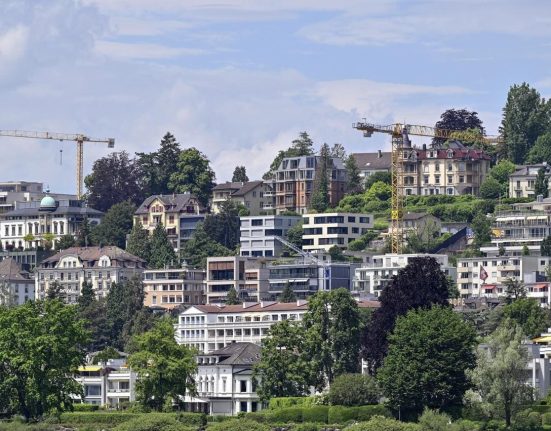“I have never even thought about buying outside of France,” says Sylvie Surpal. The managing director of a non-profit film company, she lives in the western suburbs of Paris and has owned holiday homes on the French Riviera for the past 25 years. “I love the Mediterranean and our friends and family all holiday or have a home here. It’s much easier to commit to a home where you know the laws, rules and language.”
Unlike many nationalities who can’t wait to hop on a plane for foreign shores, the French have a penchant for holidaying in their own country. In July and August, a mass exodus of Parisians head for the coast and countryside, many to their second homes.
“Many Parisians have a country property, even if they’re not super wealthy,” says Susie Hollands, chief executive of Vingt Paris. According to Insee, the National Institute of Statistics and Economic Studies, there are nearly 4mn second homes in France — 40 per cent on the coast. The majority are owned by the French (only 10 per cent are owned by foreigners), some 348,000 of them by Parisians. Notoriously discerning, their escape routes can provide inspiration to those further afield (if not their own countrymen, who often want to avoid them).

“Following a downturn in 2023 and early 2024, French property prices have been gradually levelling off,” says Joanna Leggett, marketing director of Leggett Immobilier. “And the market has become more optimistic.” She highlights that in France a slight reduction in mortgage rates — on average to around 3.3 per cent for a 20-year loan — has made lending easier, and says it remains a buyers’ market, with “vendors becoming more open to negotiation”.
Surpal first bought an apartment in Mougins, a medieval village located on a rocky outcrop 15 minutes’ drive from Cannes, followed by a house in the nearby village of Mouans-Sartoux. “It’s a family house, big enough for our children, now grown-up, and grandchildren to stay there,” she says.
Family links are often the key to where Parisians own a second home, but where they buy also depends on who they are, says Hollands. While “the really wealthy have homes on the French Riviera — St-Tropez, St-Jean-Cap-Ferrat and Cannes”, she says, more low-key buyers “love Les Alpilles and the Luberon in Provence, which are not as glitzy. Then there’s Cap Ferret near Arcachon on the Atlantic, also a bit more discreet. Those who like châteaux, wine and an elegant lifestyle choose the Loire Valley or Burgundy.” Normandy is another hotspot.

The Riviera’s cachet sees the swankiest of sea-view homes in the sought-after spots of Cap d’Antibes and St-Jean-Cap-Ferrat fetch €40mn (£33.594mn/$45.346mn) — outstanding examples even more. A nine-bedroom property in Cannes is currently on the market for €120mn with Knight Frank.
In recent years, however, the eastern side of the Riviera — from Nice past Villefranche-sur-Mer and Eze up to the Monaco border — has slightly fallen out of favour with the Paris set, says Mark Harvey, head of international property at Knight Frank. “The centre and west, heading into Var, is simpler but still has a certain standard. The market is less internationally driven.” And the prices are lower: prices per square metre in the east can reach €11,782 (£9,898/$13,360), whereas further west around Vallauris, they fall to €4,172, according to the Notaires de France.
“For Parisians flocking to the sea, the coastline between St-Tropez and Marseille — particularly Le Lavandou, Bandol, La Ciotat and Cassis — is becoming more popular than the neighbouring Riviera,” says Harvey. Knight Frank currently has an eight-bedroom waterfront property for sale in Le Lavandou for €6.9mn and a five-bedroom villa with sea views in Cassis for €6.18mn

North of the Riviera, Les Alpilles is also “extremely popular with well-heeled Parisian buyers”, adds Harvey. The low-lying mountain range is in Provence, 20km south of Avignon, and encompasses towns and villages such as St-Rémy-de-Provence and Les Baux-de-Provence, with mellow stone buildings, night markets and chic boutiques and restaurants. In St-Rémy, Knight Frank’s properties include a €850,000 four-bedroom house and a €2.335mn six-bedroom villa with pool.
It’s not all about heading south of Paris, though. “There’s a trend towards buying in less discovered areas for better value and more tranquillity,” says Miranda Junowicz, founder of the Paris Property Group. “While Provence and the Riviera offer sun and a complete change of scenery, Normandy is popular for a swift weekend retreat.”
North of the capital, and reachable in less than three hours by train or car, traditional Normandy hotspots include Deauville, nicknamed the “21st arrondissement of Paris”. Further up the coast, in Pas-de-Calais, another favourite is Le Touquet — known as Le Touquet-Paris-Plage. Fashionable in the early 20th century, both resorts retain an old-world glamour, with upmarket shops, seafood restaurants, casinos, racetracks and an equestrian scene, while being significantly more affordable than their Riviera counterparts. A four-bedroom town house in the heart of Deauville is on the market for €1.97mn with Emile Garcin, while a six-bedroom Anglo-Norman villa is €3.99mn with Barnes International.

The younger generation of Parisians, “those looking for barefoot luxury, somewhere more connected with nature and less developed”, are looking to the Atlantic coast, says Harvey — particularly “the Côte d’Argent, from Arcachon down to St-Jean-de-Luz”. The beachy headland commune of Cap Ferret (not to be confused with St-Jean-Cap-Ferrat on the Riviera), sweeping across the Bassin d’Arcachon famous for its oyster beds, is the “pinnacle”, he says. “There’s a fixed number of houses there; you can’t build any more.” While a front-line villa there with direct beach access is priced at €11mn, a four-bedroom villa with pool is €3.99mn, both with Barnes Cap Ferret.
You’ll get more for your euro two hours’ drive south along the coast towards Biarritz; Hossegor has a vibrant surfy vibe. A two-bedroom apartment in the town centre is priced at €1.68mn with Barnes International.
Indeed, the type of property Parisians own in the city can also have a bearing on their holiday home. Helena Hermanns, head of Leggett Immobilier’s Paris office, explains: “Those with apartments in Paris tend to look for houses under two hours’ drive from the city, while those already living in houses in Paris often fly down to coastal apartments.”

The infrastructure access from Paris also affects where people buy, notes Tim Swannie, director of Home Hunts. “Aix-en-Provence is known as the ‘Paris of Provence’ partly because of the architecture and cultural offerings but also because it is so popular with Parisians,” he says. “The TGV runs from Paris to Aix in three hours so it’s easy to jump on a train after work on Friday and be at your holiday home for supper.”
Swannie recently sold a renovated farmhouse outside Aix for over €3mn to French buyers, who also have homes in Paris and northern France. His Aix offerings now include a four-bedroom duplex apartment in a historic town-centre building (€1.05mn) and a seven-bedroom former hunting lodge on a two-hectare wooded estate (€7.9mn).
Holiday home choices can also be specific to which area of Paris buyers live in, says Hollands. “There’s a socio-economic stereotype. For Parisians from the 16th arrondissement, it’s Normandy, around Deauville, whereas “bobos” — bourgeois bohemians — from the Marais and Bastille might have a big place in the Luberon, Provence — worth 10 times more than the locals would dream of spending on a property.”

Partly for this reason, holiday-home owners from the capital aren’t always popular. Some even go out of their way to avoid them. “They are a huge force though,” adds Hollands. “The second-home Parisian market is so important in these areas.”
But post-pandemic, the rise in remote working and the desire for green spaces has encouraged a shift from second homes to “semi-primary homes” — places where owners spend part of the week as well as holidays and weekends. “People are seeking peace and quiet, a return to nature, with clean air — they want to unwind and disconnect but still have access to oyster farms or whatever they’re into, not to be completely off the radar,” says Harvey.

“Parisians are used to having the best of everything on their doorstep — good food, wine, local shops — and they want the same on holiday too,” says Hollands. “But in France it’s all about the ‘terroir’ — your second home may be out of the way and more rustic, but you still have really good regional food.”
Cédric Pinto, director of Espaces Atypiques, works with Parisian buyers looking for second homes around the Loire Valley, famous for its grand châteaux and pastoral landscapes. “Far from the rural clichés, these are dynamic areas, with magnificent towns like Tours, Angers and Saumur, and a first-rate cultural and gastronomic offering,” he says. Espaces Atypiques is offering an eight-bedroom house set in 13 acres, including a vineyard, in the commune of Vernou sur Brenne for €1.58mn. “A second home is an anchor, a safety valve, and sometimes a plan B for tomorrow,” says Pinto.
For Parisian private equity consultant Simon Colboc, buying a second home in a remote part of western Brittany 20 years ago was an opportunity to put down roots for his family. “We wanted a ‘permanent’ place, where we could gather over the years,” he says. “We bought the house when our children were four and six, and we wanted them to grow up with this house as a beacon.”
They visit three or four times a year. “In summer, my wife goes for two months, and I alternate remote working from there or hopping on a train back to Paris for meetings. Our grown-up children invite their friends over too.
“In France, we have a large and diverse country where you can find pretty much whatever you want in terms of scenery, activities and affordability,” he shrugs. “Why bother to look elsewhere?”
Find out about our latest stories first — follow @ft_houseandhome on Instagram







